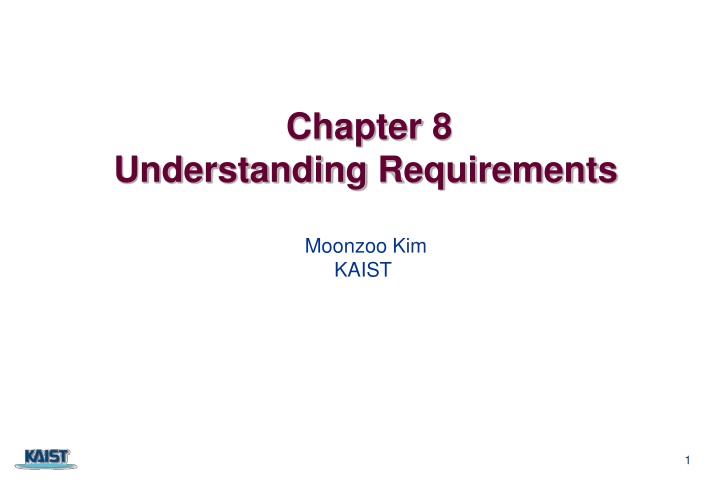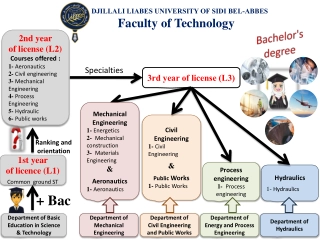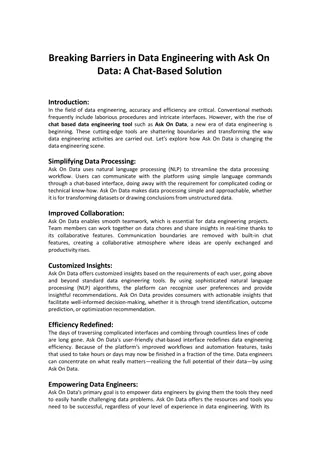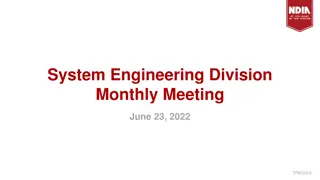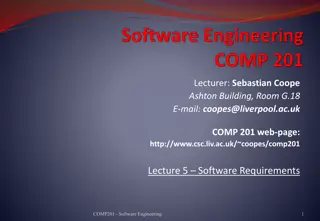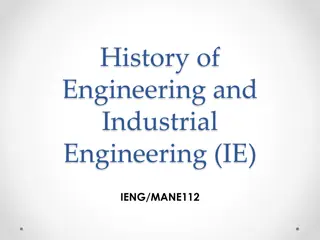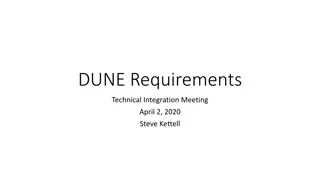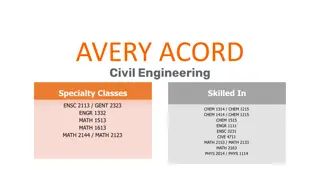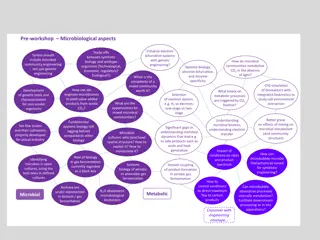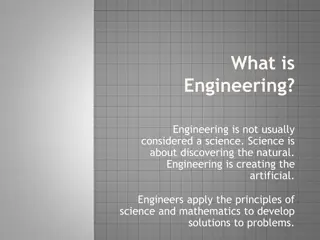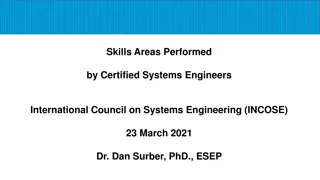Requirements Engineering Overview
This content provides an overview of requirements engineering, including topics such as understanding requirements, elicitation, negotiation, specification, and requirements management. It covers key concepts like identifying stakeholders, conducting meetings, and creating analysis models.
Uploaded on Feb 17, 2025 | 1 Views
Download Presentation

Please find below an Image/Link to download the presentation.
The content on the website is provided AS IS for your information and personal use only. It may not be sold, licensed, or shared on other websites without obtaining consent from the author.If you encounter any issues during the download, it is possible that the publisher has removed the file from their server.
You are allowed to download the files provided on this website for personal or commercial use, subject to the condition that they are used lawfully. All files are the property of their respective owners.
The content on the website is provided AS IS for your information and personal use only. It may not be sold, licensed, or shared on other websites without obtaining consent from the author.
E N D
Presentation Transcript
Chapter 8 Understanding Requirements Moonzoo Kim KAIST 1
Requirements Engineering-I Inception ask a set of questions that establish basic understanding of the problem (what) the people who want a solution (who) the nature of the solution that is desired, and the effectiveness of preliminary communication and collaboration between the customer and the developer Elicitation elicit requirements from all stakeholders Elaboration create an analysis model that identifies data, function and behavioral requirements Negotiation agree on a deliverable system that is realistic for developers and customers 2
Requirements Engineering-II Specification can be any one (or more) of the following: A written document A set of models A collection of user scenarios (use-cases) A prototype Validation a review mechanism that looks for Errors in content or interpretation Areas where clarification may be required (ambiguity) Missing information (incomplete requirement) Inconsistencies a major problem when large products or systems are engineered Unrealistic (unachievable) requirements. Requirements management 3
Inception Identify stakeholders who else do you think I should talk to? Recognize multiple points of view Work toward collaboration The first questions Who is behind the request for this work? Who will use the solution? What will be the economic benefit of a successful solution Is there another source for the solution that you need? 4
Eliciting Requirements meetings are conducted and attended by both software engineers and customers an agenda is suggested a "facilitator" (can be a customer, a developer, or an outsider) controls the meeting a "definition mechanism" (can be work sheets, flip charts, or wall stickers or an electronic bulletin board, chat room or virtual forum) is used the goal is to identify the problem propose elements of the solution negotiate different approaches, and specify a preliminary set of solution requirements 5
Elicitation Work Products a set of usage scenarios that provide insight into the use of the system or product under different operating conditions. any prototypesdeveloped to better define requirements. a statement of need and feasibility. a bounded statement of scope for the system or product. a list of customers, users, and other stakeholders who participated in requirements elicitation a description of the system s technical environment. a list of requirements (preferably organized by function) and the domain constraints that apply to each. 6
Quality Function Deployment (QFD) Function deployment determines each function required of the system Information deployment identifies data objects and events Task deployment examines the behavior of the system Value analysis determines the relative priority of requirements during each of the three deployments Value should be one that are perceived by the customer 7
Non-Functional Requirements Non-Functional Requirement (NFR) quality attribute, performance attribute, security attribute, or general system constraint. A two phase process is used to determine which NFR s are compatible: The first phase is to create a matrix using each NFR as a column heading and the system SE guidelines a row labels The second phase is for the team to prioritize each NFR using a set of decision rules to decide which to implement by classifying each NFR and guideline pair as complementary overlapping conflicting independent 8
Conducting a Requirements Gathering Meeting (pg145) The scene: A meeting room. The first requirements gathering meeting is in progress. The players: Jamie Lazar, software team member; Vinod Raman, software team member; Ed Robbins, software team member; Doug Miller, software engineering manager; three members of marketing; a product engineering representative; a facilitator. The conversation: Facilitator (pointing at white board): So that's the current list of objects and services for the home security function. Marketing person: That about covers it from our point of view. Vinod: Didn't someone mention that they wanted all SafeHome functionality to be accessible via the Internet? That would include the home security function, no? Marketing person: Yes, that's right ... we'll have to add that functionality and the appropriate objects. CS350 Intro. to SE Spring 2008 9
Facilitator: Does that also add some constraints? Jamie: It does, both technical and legal. Production rep: Meaning? Jamie: We better make sure an outsider can't hack into the system, disarm it, and rob the place or worse. Heavy liability on our part. Doug: Very true. Marketing: But we still need Internet connectivity. Just be sure to stop an outsider from getting in. Ed: That's easier said than done and.... Facilitator (interrupting): I don't want to debate this issue now. Let's note it as an action item and proceed. (Doug, serving as the recorder for the meeting, makes an appropriate note.) Facilitator: I have a feeling there's still more to consider here. (The group spends the next 45 minutes refining and expanding the details of the home security function.) CS350 Intro. to SE Spring 2008 10
Use-Cases A collection of user scenarios that describe the thread of usage of a system Each scenario is described from the point-of-view of an actor a person or device that interacts with the software in some way Each scenario answers the following questions: Who is the primary actor, the secondary actor (s)? What are the actor s goals? What preconditions should exist before the story begins? What main tasks or functions are performed by the actor? What extensions might be considered as the story is described? What variations in the actor s interaction are possible? What system information will the actor acquire, produce, or change? Will the actor have to inform the system about changes in the external environment? What information does the actor desire from the system? Does the actor wish to be informed about unexpected changes? 12
Example of Use Case for SafeHome Exceptions: 1a. Control panel is not ready: homeowner checks all sensors to determine which are open; closes them 2a. Password is incorrect Priority: Essential, must be implemented When available: first increment Frequency of use: Many times per day Channel to actor: Via control panel interface Secondary actors: Support technician Channels to secondary actors: support technician: phone line Open issues: Do we enforce time limit for password entering? Use-case: InitiateMonitoring Primary actor: Homeowner Goal in context: To set the system to monitor sensors when the homeowner leaves the house or remains inside Preconditions: System has been programmed for a password and to recognize various sensors Trigger: The homeowner decides to set the system, i.e., to turn on the alarm functions Scenario: 1. Homeowner: observes control panel 2. Homeowner:enters password 3. Homeowner: selects stay or away 4. Homeowner: observes red alarm light to indicate that SafeHome has been armed 13
Use-Case Diagram Arms/ disarms system sensors Accesses system via Internet homeowner Responds to alarm event Encounters an error condition Reconfigures sensors and related system features system administrator 14
Building the Analysis Model Elements of the analysis model Scenario-based elements Functional processing narratives for software functions Use-case descriptions of the interaction between an actor and the system Class-based elements Implied by scenarios Behavioral elements State diagram Flow-oriented elements Data flow diagram 15
Eliciting Requirements Conduct FAST meetings Make lists of functions, classes Make lists of constraints, etc. formal prioritization? Elicit requirement s no yes define actors Use QFD to prioritize requirements informally prioritize requirements draw use-case diagram write scenario Create Use-cases complete template 16
Class Diagram From the SafeHomesystem Sensor name/id type location area characteristics identify() enable() disable() reconfigure () 17
State Diagram Reading commands Initialization not jammed subsystems ready turn copier on paper full system status= not ready display msg = please wait display status = blinking system status= Ready display msg = enter cmd display status = steady entry/ switch machine on do: run diagnostics do: initiate all subsystems entry/ subsystems ready do: poll user input panel do: read user input do: interpret user input turn copier off start copies Making copies load paper copies complete system status= Copying display msg= copy count = display message=#copies display status= steady system status= load paper display msg= load paper display status= blinking paper tray empty entry/ start copies do: manage copying do: monitor paper tray do: monitor paper flow paper jammed entry/ paper empty do: lower paper tray do: monitor fill switch do: raise paper tray problem diagnosis system status= Jammed display msg= paper jam display message=location display status= blinking not jammed entry/ paper jammed do: determine location do: provide corrective msg. do: interrupt making copies Figure 7.6 Preliminary UML st at e diagram for a phot ocopier 18
Negotiating Requirements Identify the key stakeholders These are the people who will be involved in the negotiation Determine each of the stakeholders win conditions Win conditions are not always obvious Negotiate Work toward a set of requirements that lead to win-win 19
Validating Requirements-I Is each requirement consistent with the overall objective for the system/product? Have all requirements been specified at the proper level of abstraction? That is, do some requirements provide a level of technical detail that is inappropriate at this stage? Is the requirement really necessary or does it represent an add-on feature that may not be essential to the objective of the system? Is each requirement bounded and unambiguous? Does each requirement have attribution? That is, is a source (generally, a specific individual) noted for each requirement? 20
Validating Requirements-II Do any requirements conflict with other requirements? Is each requirement achievable in the technical environment that will house the system or product? Is each requirement testable, once implemented? Does the requirements model properly reflect the information, function and behavior of the system to be built. Has the requirements model been partitioned in a way that exposes progressively more detailed information about the system. 21
Specification Guidelines use a layered format that provides increasing detail as the "layers" deepen use consistent graphical notation and apply textual terms consistently (stay away from aliases) be sure to define all acronyms be sure to include a table of contents; ideally, include an index and/or a glossary write in a simple, unambiguous style (see "editing suggestions" on the following pages) always put yourself in the reader's position, "Would I be able to understand this if I wasn't intimately familiar with the system?" 22
Specification Guidelines Be on the lookout for persuasive connectors, ask why? keys: certainly, therefore, clearly, obviously, it follows that ... Watch out for vague terms keys: some, sometimes, often, usually,ordinarily, most, mostly ... When lists are given, but not completed, be sure all items are understood keys: etc., and so forth, and so on, such as Be sure stated ranges don't contain unstated assumptions e.g., Valid codes range from 10 to 100. Integer? Real? Hex? Beware of vague verbs such as handled, rejected, processed, ... Beware "passive voice" statements e.g., The parameters are initialized. By what? Beware "dangling" pronouns e.g., The I/O module communicated with the data validation module and its contol flag is set. Whose control flag? 23
Specification Guidelines When a term is explicitly defined in one place, try substituting the definition forother occurrences of the term When a structure is described in words, draw a picture When a structure is described with a picture, try to redraw the picture to emphasize different elements of the structure When symbolic equations are used, try expressing their meaning in words When a calculation is specified, work at least two examples Look for statements that imply certainty, then ask for proof keys; always, every, all, none, never Search behind certainty statements be sure restrictions or limitations are realistic 24
